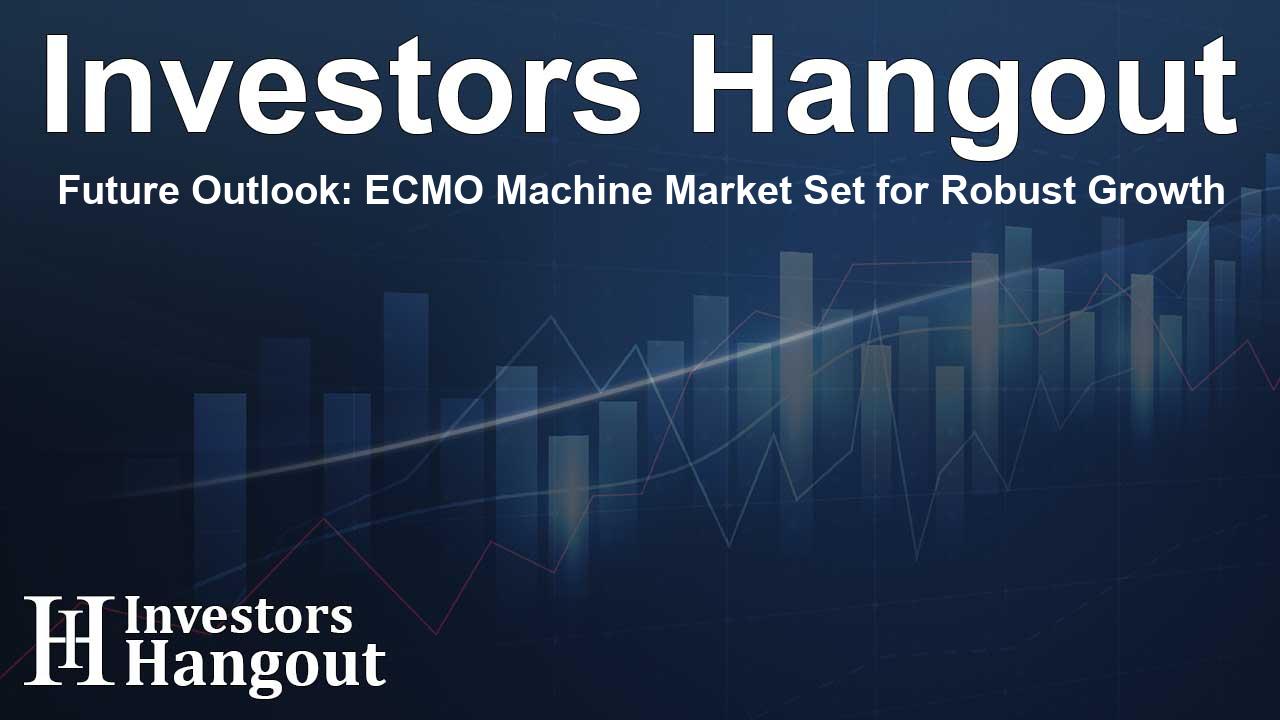Future Outlook: ECMO Machine Market Set for Robust Growth

Growth Prospects for the ECMO Machine Market
The ECMO (Extracorporeal Membrane Oxygenation) Machine Market is gaining significant attention due to its critical role in life-saving medical procedures. With an anticipated market valuation reaching US$0.86 billion by the end of the decade, the forecasted CAGR of 5.8% showcases a thriving sector driven by the increasing prevalence of cardiopulmonary diseases. Factors contributing to this rise include pollution, an aging population, and lifestyle shifts contributing to health complications.
Understanding the Importance of ECMO Machines
ECMO machines are vital in modern healthcare, particularly when traditional mechanical ventilation and medications fall short. These machines provide essential life support to patients suffering from conditions like respiratory distress syndrome and severe heart failure. In fact, studies indicate that survival rates for patients treated with ECMO are significantly higher when it serves as a last-ditch intervention. As more hospitals expand their ICUs equipped with ECMO technology, the adoption rate is expected to soar in response to mounting patient needs, especially among those awaiting heart transplants.
Key Factors Driving Market Growth
The rise in the ECMO machine market is largely influenced by increasing incidences of respiratory and cardiac-related morbidities. Hospitals are investing heavily in ECMO technology to manage elevated patient volumes effectively. This demand is further propelled by the requirement for transient support systems, especially for patients with complex health needs.
ECMO Market Segmentation
The market is categorized into components and machine types, with components making up the largest segment. Innovations in oxygenator designs, centrifugal pumps, and digital controllers continue to enhance performance and reliability of ECMO systems. Notable advancements include the development of lightweight oxygenators with high gas exchange efficiency and biocompatible coatings that minimize complications.
Adult, Pediatric, and Neonate Patient Segmentation
The distribution of ECMO usage spans adults, pediatrics, and neonates, with adults constituting the largest patient group. The growing prevalence of lifestyle-related health issues like obesity and diabetes increases the adult segment's vulnerability to severe conditions necessitating ECMO support. This demographic is expected to continue being the primary focus as ECMO technology evolves to meet their unique needs.
Regional Insights into ECMO Adoption
North America stands out in the early adoption of ECMO technology. The proactive approach of U.S. hospitals has fostered an environment ripe for integrating cutting-edge ECMO solutions, backed by consistent R&D investments and ongoing clinical trials. This region's commitment to innovation not only significantly improves patient outcomes but also sets a healthcare standard driving ECMO advancements. As North America solidifies its market share, Europe and Asia may follow suit, learning from these established practices.
Leading Manufacturers in the Market
Several prominent companies are steering the ECMO machines market, each contributing through various growth strategies like product launches and strategic partnerships. Noteworthy players include Fresenius Medical Care AG & Co. KGaA, Getinge AB, and Medtronic, all renowned for their focus on innovation and quality. As they expand their offerings, these companies are enhancing their capabilities to meet global hospital demands.
Innovative Trends in ECMO Device Technology
Innovation is at the forefront of ECMO technology enhancements as manufacturers strive to develop systems that prioritize patient safety and usability. By focusing on improving oxygenator functionality and minimizing complications, these companies are ensuring that ECMO machines remain state-of-the-art tools in critical care. A commitment to comprehensive training for healthcare professionals further ensures an effective and reliable use of ECMO technology in hospitals.
Frequently Asked Questions
What is the ECMO Machine Market and its expected growth?
The ECMO Machine Market is projected to reach US$0.86 billion by 2030, growing at a CAGR of 5.8% due to increasing cardiopulmonary health issues.
Why are ECMO machines critical in healthcare?
ECMO machines provide life support for patients whose respiratory or cardiac functions are compromised when other interventions fail.
What factors influence ECMO adoption in hospitals?
The rise in respiratory and cardiac diseases, coupled with advancements in ECMO technology, drives hospital investments in ECMO solutions.
What roles do major companies play in this market?
Leading manufacturers like Fresenius Medical Care AG and Medtronic are vital in developing innovative ECMO technologies and expanding market reach through growth strategies.
How does ECMO technology vary by patient type?
The ECMO market is differentiated by patient types—adults, pediatrics, and neonates, with the adult segment currently leading due to lifestyle-related health issues.
About The Author
Contact Ryan Hughes privately here. Or send an email with ATTN: Ryan Hughes as the subject to contact@investorshangout.com.
About Investors Hangout
Investors Hangout is a leading online stock forum for financial discussion and learning, offering a wide range of free tools and resources. It draws in traders of all levels, who exchange market knowledge, investigate trading tactics, and keep an eye on industry developments in real time. Featuring financial articles, stock message boards, quotes, charts, company profiles, and live news updates. Through cooperative learning and a wealth of informational resources, it helps users from novices creating their first portfolios to experts honing their techniques. Join Investors Hangout today: https://investorshangout.com/
The content of this article is based on factual, publicly available information and does not represent legal, financial, or investment advice. Investors Hangout does not offer financial advice, and the author is not a licensed financial advisor. Consult a qualified advisor before making any financial or investment decisions based on this article. This article should not be considered advice to purchase, sell, or hold any securities or other investments. If any of the material provided here is inaccurate, please contact us for corrections.
